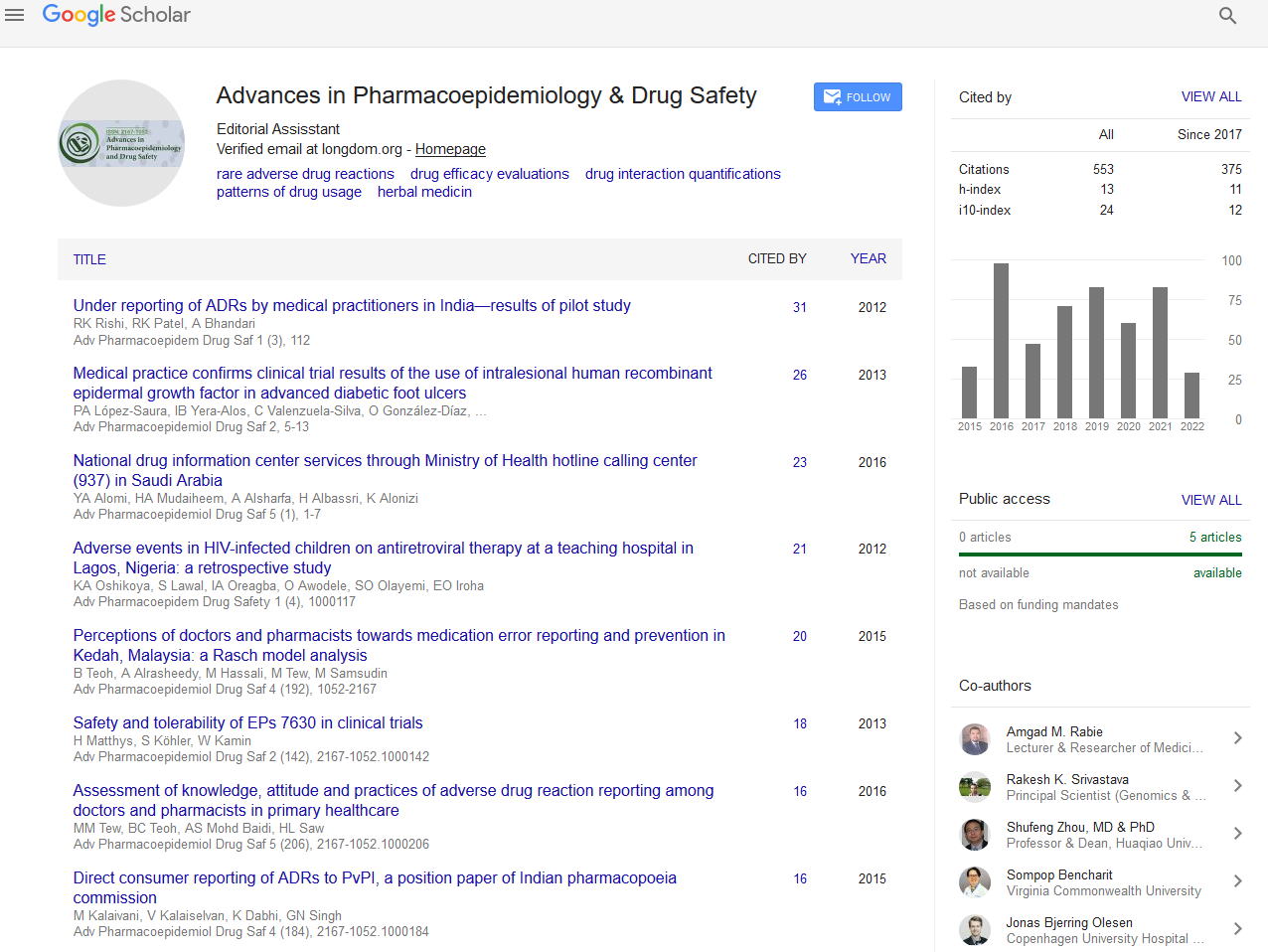Indexed In
- Open J Gate
- Genamics JournalSeek
- Academic Keys
- JournalTOCs
- RefSeek
- Hamdard University
- EBSCO A-Z
- SWB online catalog
- Publons
- Geneva Foundation for Medical Education and Research
- Euro Pub
- Google Scholar
Useful Links
Share This Page
Journal Flyer

Open Access Journals
- Agri and Aquaculture
- Biochemistry
- Bioinformatics & Systems Biology
- Business & Management
- Chemistry
- Clinical Sciences
- Engineering
- Food & Nutrition
- General Science
- Genetics & Molecular Biology
- Immunology & Microbiology
- Medical Sciences
- Neuroscience & Psychology
- Nursing & Health Care
- Pharmaceutical Sciences
Abstract
Treatment of Hepatitis C with First Generation Protease Inhibitors
Marcos Cardoso Rios, Evelyne de Andrade Mota, Layana Tyara Sandes Fraga, Saulo Makerran Loureiro, Tereza Virgínia Silva Bezerra Nascimento, Ângelo Roberto Antoniolli, Divaldo Pereira de Lyra-Junior and Alex Franca
Recent changes in the treatment of hepatitis C have increased the demands for medical care and pharmacovigilance. The aim of this study was to evaluate the epidemiological profile, drug therapy, and response to treatment of chronic hepatitis C patients treated with interferon plus ribavirin in combination with Telaprevir (TVR) or Boceprevir (BOC), in an outpatient hospital in Northeast Brazil. A retrospective review of patient records archived at the Hepatology Unit of the University Hospital of the Federal University of Sergipe was conducted. A total of 48 treatments were analyzed, with TVR (35) being the most used antiviral drug. The overall Sustained Virologic Response (SVR) rate after a 48-week treatment course was 61.5% among patients who received TVR and 50% among patients who received BOC. However, the SVR rate was lower when intention-to-treat was considered, decreasing to 22.8% for TVR treatment, and 15.4% for BOC treatment. Cirrhosis was one of the main characteristics of patients with suspension of treatment due to adverse reactions associated with TVR use. During combination drug treatment, adverse reactions caused by the different drugs are cumulative, creating a scenario that is difficult to control. These findings indicate the need for multidisciplinary care, and for review of therapeutic indications or even evaluating the anticipation of treatment of chronic carriers of hepatitis C, in order to achieve better results. The availability of new direct antiviral drugs will negate the need for a therapy associated with significant adverse reactions and low therapeutic response.


